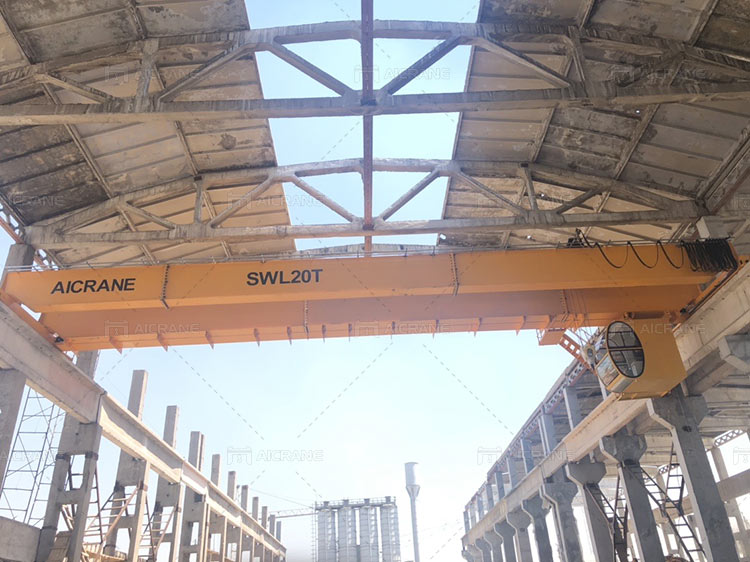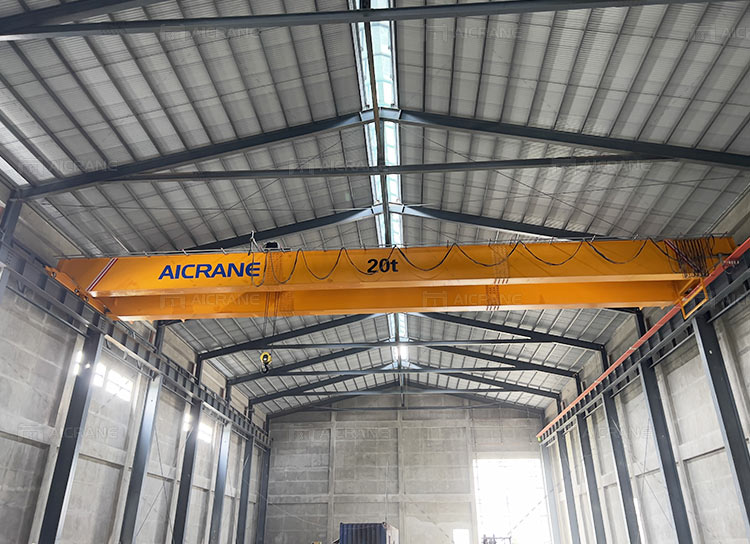Overhead travelling cranes, also known as EOT (Electric Overhead Travelling) cranes, are crucial for lifting, transporting, and placing heavy loads with precision in industries like manufacturing, warehousing, construction, and power generation. Ensuring accurate load placement with EOT cranes is essential to maximizing operational efficiency, minimizing downtime, and preventing safety hazards. Accurate load placement contributes to smoother workflows, better handling of materials, and reduction in potential damage to equipment and products.
In this article, we’ll explore key factors that influence accurate load placement with overhead travelling cranes, including operator skills, crane components, modern technology, and best practices that enhance precision.

1. Operator Training and Expertise
One of the most fundamental aspects of accurate load placement lies in the expertise of the crane operator. Proper operator training and experience are critical for ensuring precise movements and safe load handling.
- Training: Operators should undergo comprehensive training that covers the crane’s control systems, load charts, safety protocols, and handling of materials in different environments. Practical experience, alongside theoretical knowledge, builds an operator’s confidence and familiarity with the crane’s functionalities.
- Attention to Safety: Operators must always follow safety protocols to minimize human error. Mistakes such as excessive speed, improper hoist use, or ignoring load swing can result in inaccurate load placement or accidents. Operators should also be familiar with load weight distribution and center of gravity to maintain stability when lifting or positioning loads.
- Controlled Movements: The ability to smoothly control the crane’s movements is essential for accurate placement. Operators should focus on controlled starts, stops, and turns to reduce load sway or oscillation, which could otherwise result in misalignment.
2. Crane Components for Precision
Accurate load placement also depends heavily on the mechanical and electrical components of the Aicrane overhead crane. Proper maintenance and upgrades to these components ensure smooth and precise operation.
- Hoist Systems: The hoist system is the primary lifting mechanism. Precision hoists that offer variable speed control allow operators to make small adjustments when lowering or raising the load, ensuring precise alignment. High-performance hoists with anti-sway technology can also reduce unintended swinging, contributing to better placement accuracy.
- Trolley and Bridge Movement: Trolley and bridge mechanisms enable horizontal movement of the load. Motors controlling these movements should offer smooth acceleration and deceleration to avoid abrupt stops that can lead to load displacement. Many modern cranes are equipped with inverter controls that allow for fine-tuned adjustments during travel.
- End Stops and Limit Switches: These components prevent the crane from traveling too far along its runway or lifting beyond its limits. Accurate positioning of the end stops helps in setting predefined zones for load placement, ensuring precise alignment with designated drop-off points.

3. Modern Technologies for Enhanced Precision
Technological advancements in overhead travelling cranes have transformed how operators handle loads, allowing for greater precision and control.
- Anti-Sway Systems: Modern EOT cranes are equipped with anti-sway technology that uses sensors and control algorithms to minimize the swinging motion of the load during movement. This technology adjusts the crane’s speed, braking, and direction to reduce oscillation, resulting in precise load placement, especially in environments that require high levels of accuracy, such as automotive or aerospace manufacturing.
- Positioning and Laser Systems: Laser positioning systems can be integrated into industrial overhead cranes to provide real-time data on the load’s position. These systems allow operators to monitor the crane’s location relative to the designated placement area, ensuring the load is placed accurately with minimal manual intervention.
- Automation and PLC Systems: Programmable Logic Controllers (PLCs) enable operators to automate certain movements of the crane, such as lifting, lowering, or traversing predefined paths. Automation improves accuracy by eliminating human error in repetitive operations. PLCs also enable data logging and diagnostics, which can be used to further optimize crane performance and accuracy over time.
- Wireless Remote Controls: Wireless remote controls allow operators to position themselves in the best possible vantage point to ensure accurate load placement. Instead of relying solely on stationary control cabins, operators can move to locations that offer better visibility of the load and its drop-off point, reducing the risk of misalignment.
4. Environmental Factors
Environmental conditions can significantly impact the accuracy of load placement with overhead travelling cranes. Taking these factors into consideration and making appropriate adjustments can improve precision.
- Wind and Weather Conditions: In outdoor environments, wind can cause loads to sway, making accurate placement more difficult. Wind sensors and wind-speed indicators should be utilized to monitor weather conditions, and operations should be paused if wind speed exceeds safe operational limits.
- Temperature Extremes: Extremely hot or cold temperatures can affect the performance of crane components, such as motors, brakes, and electrical systems. Regular maintenance and weather-resistant components help to mitigate these issues, ensuring consistent performance regardless of environmental conditions.
- Obstacles in the Crane’s Path: Obstructions along the crane’s path can cause unwanted deflections or impact crane positioning. A thorough assessment of the work area before operations begins can help identify potential obstacles. Using sensors or cameras to monitor blind spots or areas out of the operator’s line of sight further aids in preventing collisions or misalignment.
5. Best Practices for Accurate Load Placement
In addition to technology and training, certain best practices can enhance the accuracy of load placement with overhead travelling cranes.
- Pre-Lift Planning: Operators should always plan the load’s path before starting any lift. This includes understanding the load’s dimensions, weight, and balance point, as well as identifying the exact placement location. Pre-lift meetings and communication between crane operators, riggers, and ground personnel ensure that everyone is aligned on the process.
- Using Proper Rigging Techniques: Rigging plays a vital role in maintaining load stability during lifting and placement. Choosing the right rigging equipment, including slings, shackles, and chains, helps distribute the load’s weight evenly, preventing tilting or swaying during transit.
- Slow and Steady Movements: Precision often requires operators to move slowly and deliberately, especially when nearing the placement point. Fast, jerky movements should be avoided as they can cause the load to swing uncontrollably, making accurate placement challenging.
- Regular Inspections and Maintenance: Routine inspections of the single or double girder overhead crane components, including hoists, trolleys, and control systems, are necessary to identify wear and tear that could affect precision. Maintenance schedules should be adhered to, ensuring that the crane is operating at its optimal capacity.
Conclusion
Accurate load placement with overhead travelling cranes is a combination of skilled operation, advanced technology, proper rigging, and environmental awareness. By focusing on operator training, utilizing modern crane components, adopting technological innovations, and following best practices, businesses can ensure that their EOT cranes are capable of delivering precise and efficient load handling. Implementing these strategies not only boosts productivity but also enhances safety and reduces operational risks in various industrial environments.